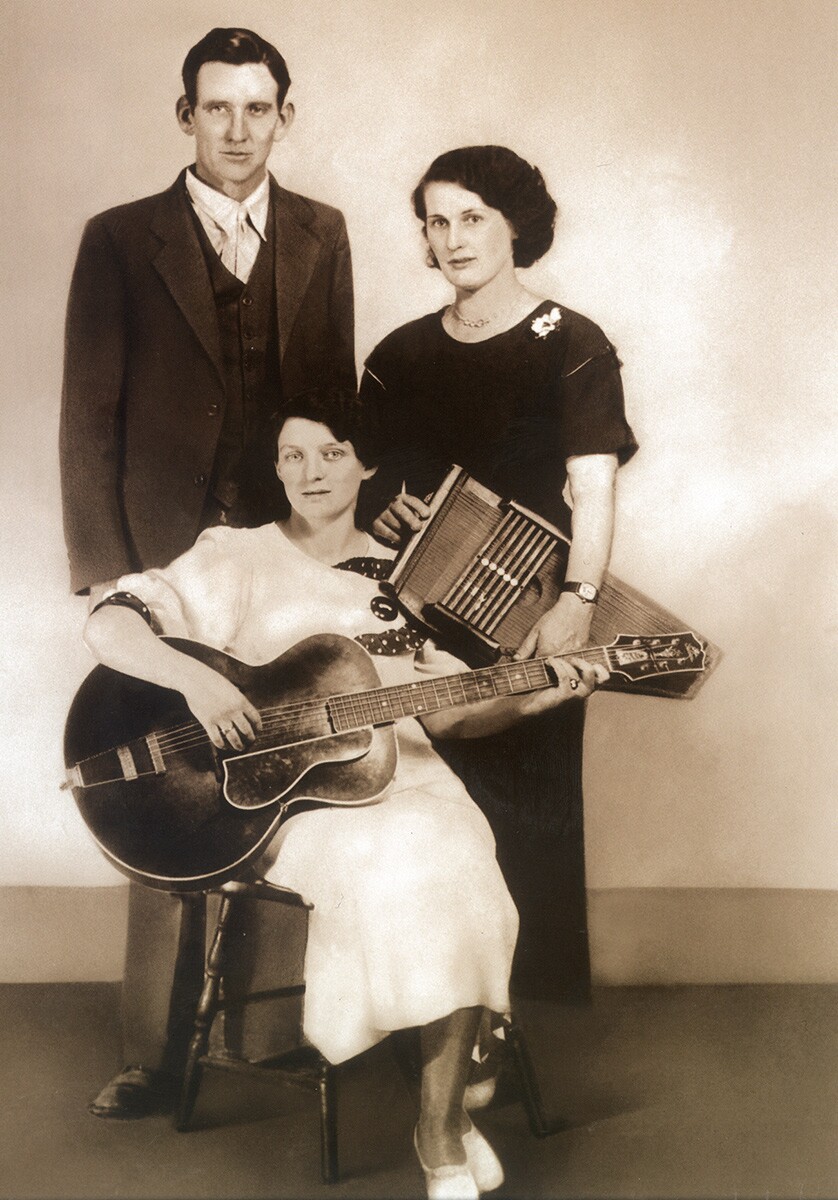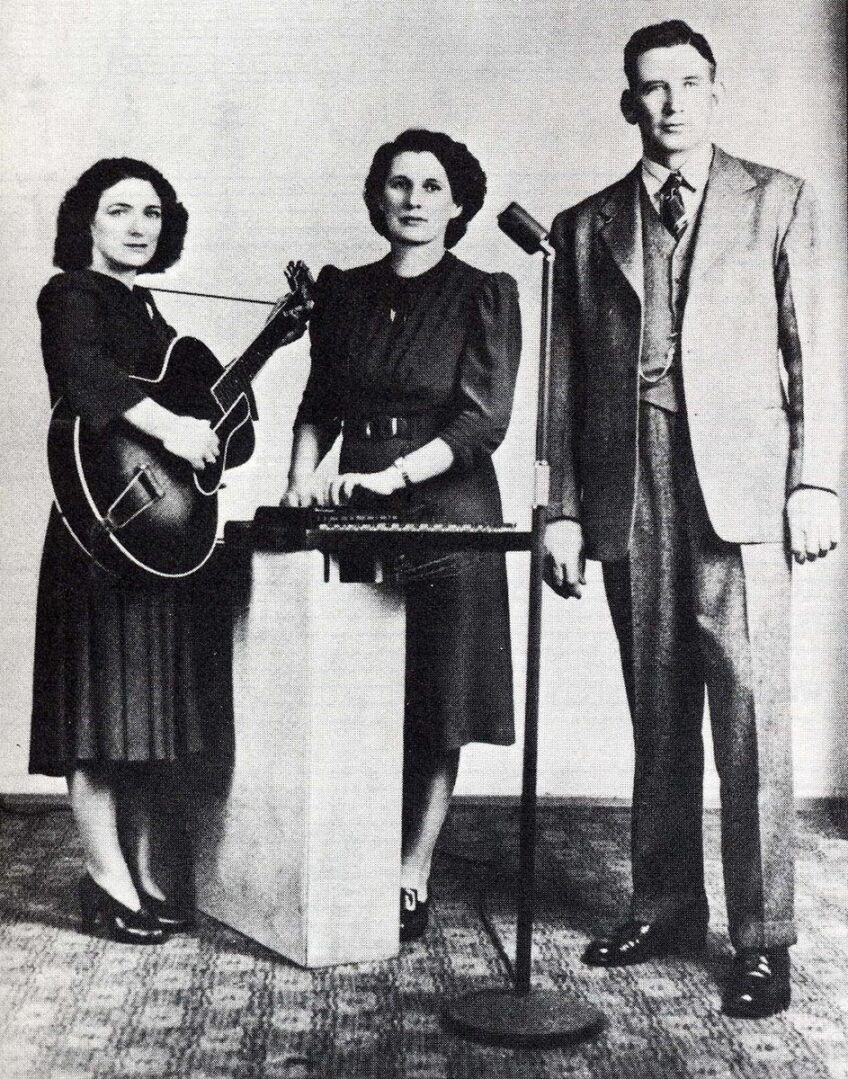Meet the Carter Family
Country Music, a new 8-part, 16-hour documentary film series directed by Ken Burns, written by Dayton Duncan and produced by Duncan, Julie Dunfey and Burns, will premiere September 15, 2019 on PBS stations nationwide. The companion book, "Country Music: An Illustrated History" — written by Duncan with an introduction by Burns — will be published by Alfred A. Knopf, Burns’s longtime publisher, on September 10, 2019. In the following excerpt, meet A.P., Sara and Maybelle Carter, a music group who were instrumental to the genre of country music.
The Carter Family were elemental. It’s like the atom. It was the beginning of the building blocks for the rest of us. Those songs, they were captured rather than written. They were in the hills like rock formations.
So, in 1927, those first Bristol recordings, these songs that were part of the collective unconscious were gathered together, documented forever, with these plaintive voices and these elemental guitars. The bedrock was formed for the rest of us.
Rosanne Cash

Alvin Pleasant (A.P.) Carter was thirty-five years old that summer of 1927, trying to make ends meet in the southwest corner of Virginia, in one of the state’s most impoverished counties — in an area called Poor Valley. He had been born with a palsy, a slight shaking in his hands and sometimes in his voice, that his mother blamed on a lightning bolt that had struck the ground next to her when she was picking up apples on the mountainside just before his birth.
But A. P. Carter possessed a talent for music, and though his schooling ended when he was ten, he had learned to play the fiddle and read the shape-note songbooks used in the local Methodist church, impressing people with his rich, bass voice as he grew into a lanky six-foot-two-inch man.

Explore the history of country music from its deep roots in ballads, hymns and blues, to its mainstream popularity in Ken Burns' "Country Music." Watch this preview.
He took a job selling fruit tree saplings, rambling for miles on foot from farm to farm, and in 1914, after crossing Clinch Mountain to find customers on the more prosperous side called Rich Valley, he heard a young woman’s clear and deep voice singing nearby. It caught his interest. So did the singer herself.
Sara Dougherty was barely sixteen at the time, already skilled on the autoharp she had purchased from Sears, Roebuck at the age of ten and steeped in old mountain ballads and gospel hymns. A year later, A.P. and Sara married, and A.P. brought her by wagon to a two-room cabin in Poor Valley, later building a more proper home in the foothills of Clinch Mountain, not far from Maces Spring.
As restless as he was ambitious, A.P. would be gone for weeks at time over the next ten years, selling his trees while leaving Sara to care for their three children, tend the crops, chop firewood, and handle all the responsibilities of a mountain home without his help.
When he was home, they sang at church gatherings. After one man gave Sara $10 because he said, she had “the prettiest voice I ever heard,” A.P. got the notion that they might make a little money with their music. Another time, when their car broke down, he arranged for an impromptu concert in a schoolhouse, bringing in enough cash to fix the vehicle.
In 1926, a scout for the Brunswick label appeared in the region. They went to an audition and sang “Anchored in Love.” But Brunswick was looking for a singing fiddler and suggested that A.P. bill himself as “Fiddlin’ Doc Carter,” putting Sara in the background because, he said, a woman in the lead could never be popular.
A.P. wouldn’t agree. Instead, he added another woman to the group — a younger cousin of Sara’s named Maybelle Addington, a shy teenager who had learned to play the banjo from her mother, as well as the autoharp. Then she took up the guitar – and mastered it. When Maybelle married A.P.’s brother, Eck, a mail clerk on the railroad, the couple moved to a two-story house he built for them less than a mile from A.P. and Sara’s home. There were now three Carters in the group.
